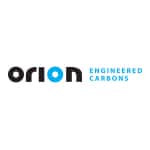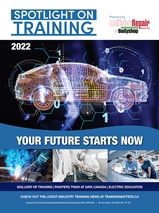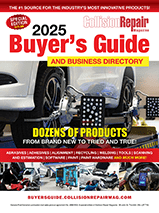HOUSTON–(BUSINESS WIRE)–$OEC #OEC–Orion Engineered Carbons S.A. (NYSE: OEC), a worldwide supplier of Specialty and High-Performance Carbon Black, today announced third quarter 2019 financial results.
Third Quarter 2019 Highlights
- Net sales of $370.2 million compared to $394.0 million in the third quarter of 2018
- Net Income of $24.3 million and basic EPS of $0.40 compared to $25.8 million and $0.43 in third quarter of 2018
- Adjusted EPS1 of $0.52 compared to $0.55 in third quarter of 2018
- Net cash provided by operating activities increased by $68.5 million during third quarter of 2019 to $142.7 million for the first nine months of 2019 compared to $64.5 million for the first nine months of 2018
- Total Carbon Black volumes of 256.4 kmt compared to 266.7 kmt in third quarter of 2018
- Adjusted EBITDA1 of $68.1 million compared to $72.6 million in the third quarter of 2018
- Specialty Carbon Black Adjusted EBITDA of $30.0 million and Rubber Carbon Black Adjusted EBITDA of $38.1 million in the third quarter of 2019
1) See below for a reconciliation of non-GAAP financial measures to the most directly comparable US-GAAP measures
“In the third quarter we executed well despite weakness in Asian markets and with automotive OEMs. Other key markets have weakened as the year played out along with the broader economy. This impacted our Specialty segment and Mechanical Rubber Goods (“MRG”) business while tire remained stable. Nonetheless, by remaining firmly focused on areas within our control, we achieved strong cash generation, realized Rubber segment price increases, and implemented a leaner and more efficient management structure. Furthermore, our operating performance generated more than enough cash to fully fund our dividend while supporting our capital expenditure program. We will emerge from this slowdown stronger, and better positioned competitively, to take advantage of our future growth opportunities,” said Mr. Corning Painter, Chief Executive Officer.
Mr. Painter continued, “Overall, price and mix were very positive for us this quarter and nearly off-set the downside from lower volumes and feedstock differentials. Pricing gains were concentrated in Rubber, while volumes were softer in Specialty and MRG. In the fourth quarter we expect differentials to stabilize at roughly current levels, while we expect volumes to remain on trend, but to slow around the December holidays as we have seen in the past.
Looking forward to 2020, while it is difficult to predict the direction of the world economy, we are sure that tires will continue to wear out and drive replacement demand. As this represents the majority of our Rubber black segment demand we continue to expect a strong 2020 pricing cycle and stable volumes for this business. We will implement a feedstock differential pass-through mechanism in our contract business which will significantly reduce variability associated with differentials in our P&L. In Specialty and Rubber we will remain disciplined in our pricing management, not chasing volumes. Instead, we plan to advance our new product offerings, get paid for value, and de-bottleneck high value offerings.
Finally, we are rounding out our strong management team with the addition of our new CFO, Lorin Crenshaw, who brings a wealth of public company experience and broad chemical sector expertise to our team. We look forward to our next chapter of growth under his financial oversight and leadership. We wish current CFO Charles Herlinger well for his retirement and thank him sincerely for his service and leadership.
I look forward to our opportunities in the fourth quarter and the year ahead. We will stay laser-focused on driving strong operational and financial performance in the business environment that develops, while also positioning our company for future success,” concluded Mr. Painter.
|
ORION ENGINEERED CARBONS |
|||
|
|
Q3 2019 |
Q3 2018 |
Y-o-Y Comparison in % |
|
Volume (kmt) |
256.4 |
266.7 |
(3.9)% |
|
Net sales in USD million |
370.2 |
394.0 |
(6.0)% |
|
Contribution Margin in USD million |
135.4 |
143.0 |
(5.3)% |
|
Contribution Margin per metric ton in USD |
527.9 |
536.0 |
(1.5)% |
|
Income from Operations (EBIT) in USD million |
38.4 |
41.8 |
(8.3)% |
|
Adjusted EBITDA in USD million |
68.1 |
72.6 |
(6.2)% |
|
Net Income in USD million |
24.3 |
25.8 |
(6.1)% |
|
Basic EPS in USD (1) |
0.40 |
0.43 |
$(0.03) |
|
Adjusted EPS in USD (2) |
0.52 |
0.55 |
$(0.03) |
|
(1) |
Basic EPS calculated using Net Income and weighted number of shares outstanding in the respective quarter. |
|
(2) |
Adjusted EPS calculated using Net Income for the respective quarter adjusted for amortization of acquired intangible assets, amortization of transaction costs and foreign currency effects impacting financial results and other adjustment items and restructuring expenses (all adjustments on a net of tax basis assuming group tax rate) and weighted number of shares outstanding in the respective quarter. |
Third Quarter 2019 Overview
Overall volumes decreased by 3.9%, or 10.3 kmt, to 256.4 kmt compared to the same quarter in the prior year. The decline was principally due to continued economic weakness related to the automobile industry in China and Europe, which impacted especially our Specialty segment and MRG business while tire remained stable.
Net sales decreased by $23.8 million, or 6.0%, to $370.2 million versus the same quarter in the prior year primarily as a result of lower volumes, the pass through of lower feedstock costs to customers and negative foreign exchange translation effects, offset by positive base price increases and improved mix.
Contribution Margin decreased by $7.6 million, or 5.3%, to $135.4 million compared to the same quarter in the prior year despite base price increases in Rubber. The decrease reflects lower volumes, negative feedstock differentials, foreign exchange rate translation effects and lower energy sales.
Income from operations decreased by $3.4 million, or 8.3%, to $38.4 million from the same quarter in the prior year. This decrease is mainly driven by the decrease in Contribution Margin somewhat offset by lower selling, general and administrative cost.
Adjusted EBITDA decreased by $4.5 million, or 6.2%, to $68.1 million compared the same quarter in the prior year, reflecting the decrease in Contribution Margin partially offset by lower selling, general and administrative expenses as well as some positive foreign exchange translation effects associated with fixed costs.
Net Income in the third quarter of 2019 decreased by $1.5 million to $24.3 million compared to the same quarter in the prior year reflecting primarily the decrease in Adjusted EBITDA offset by a lower tax expense.
Quarterly Business Segment Results
|
SPECIALTY CARBON BLACK |
|||
|
|
Q3 2019 |
Q3 2018 |
Y-o-Y Comparison in % |
|
Volume (kmt) |
60.4 |
64.7 |
(6.7)% |
|
Net sales in USD million |
122.8 |
134.2 |
(8.4)% |
|
Gross Profit in USD million |
41.4 |
48.2 |
(14.2)% |
|
Gross Profit/metric ton in USD |
685.4 |
744.9 |
(8.0)% |
|
Adjusted EBITDA in USD million |
30.0 |
34.7 |
(13.6)% |
|
Adjusted EBITDA/metric ton in USD |
496.3 |
535.7 |
(7.4)% |
|
Adjusted EBITDA Margin (%) |
24.4 |
25.8 |
|
Volumes for the Specialty Carbon Black business decreased by 6.7% in the third quarter of 2019 from 64.7 kmt in the third quarter of 2018, as a result of weaker automotive market demand mainly in Asia and Europe and weaker economy in all regions.
Net sales decreased 8.4% to $122.8 million in the third quarter of 2019 as compared to the third quarter of 2018, mainly due to lower volumes, lower feedstock cost pass through to customers and negative foreign exchange rate translation effects, partially offset by base price increases and improved mix.
Gross profit decreased by $6.8 million, or 14.2% to $41.4 million in the third quarter of 2019 as compared to the third quarter of 2018, due to lower volumes, negative foreign exchange rate translation effects, higher fixed manufacturing costs and lower energy sales, partially offset by improved mix.
Specialty Adjusted EBITDA decreased by $4.7 million, or 13.6%, to $30.0 million in the third quarter of 2019 compared to the third quarter of 2018, reflecting the decrease in gross profit partially offset by lower selling, general and administrative expenses. The Adjusted EBITDA margin decreased 140 basis points to 24.4%.
|
RUBBER CARBON BLACK |
|||
|
|
Q3 2019 |
Q3 2018 |
Y-o-Y Comparison in % |
|
Volume (kmt) |
196.0 |
202.0 |
(2.9)% |
|
Net sales in USD million |
247.4 |
259.8 |
(4.8)% |
|
Gross Profit in USD million |
57.3 |
60.9 |
(5.9)% |
|
Gross Profit/metric ton in USD |
292.5 |
301.7 |
(3.1)% |
|
Adjusted EBITDA in USD million |
38.1 |
37.9 |
0.6% |
|
Adjusted EBITDA/metric ton in USD |
194.3 |
187.6 |
3.6% |
|
Adjusted EBITDA Margin (%) |
15.4 |
14.6 |
|
Rubber Carbon Black volumes decreased by 6.0 kmt, or 2.9% from the third quarter of 2018 to the third quarter of 2019 primarily due to lower automotive mechanical rubber demand in China and Europe, with replacement tire demand remaining stable.
Net sales decreased by $12.4 million, or 4.8% to 247.4 million in the third quarter of 2019 as compared to the third quarter of 2018, primarily due the pass through of lower feedstock costs to customers, lower volumes and negative foreign exchange rate translation effects offset by base price increases.
Gross profit decreased by $3.6 million, or 5.9%, to $57.3 million in the third quarter of 2019 as compared to the third quarter of 2018, as a result of higher negative feedstock differentials, lower volumes, lower energy sales and negative foreign exchange rate translation effects offset by base price increases.
Rubber Adjusted EBITDA increased by $0.2 million, or 0.6%, to $38.1 million, in the third quarter of 2019 compared to the third quarter of 2018, reflecting the decrease in gross profit offset by lower selling, general and administrative expenses. Adjusted EBITDA margin was 15.4% in the third quarter of 2019 compared to 14.6% in the third quarter of 2018.
Balance Sheet and Cash Flows
As of September 30, 2019, the Company had cash and cash equivalents of $56.0 million, a decrease of $1.0 million from December 31, 2018. Net Debt decreased significantly to $616.4 million from $635.5 million at year ended December 31, 2018 reflecting strong cash generation in the third quarter of 2019. The Net Debt represents a multiple of 2.30 times LTM Adjusted EBITDA, compared to 2.16 times at the year ended December 31, 2018.
The following table shows our current net debt position as of September 30, 2019 compared to December 31, 2018:
|
|
|
September 30, 2019 |
|
December 31, 2018 |
||||
|
|
|
(In millions) |
||||||
|
Term loans |
|
$ |
626.0 |
|
|
$ |
650.0 |
|
|
Capitalized transaction costs (long-term) |
|
(4.9 |
) |
|
(6.3 |
) |
||
|
Long-term financial debt, net |
|
$ |
621.1 |
|
|
$ |
643.7 |
|
|
Term loans (current) |
|
$ |
7.9 |
|
|
$ |
8.2 |
|
|
Capitalized transaction costs (current) |
|
(1.4 |
) |
|
(1.5 |
) |
||
|
Short term local bank loans |
|
38.5 |
|
|
28.6 |
|
||
|
Other short term financial liabilities |
|
— |
|
|
5.7 |
|
||
|
Short-term financial debt, net |
|
$ |
45.0 |
|
|
$ |
41.0 |
|
|
Cash and cash equivalents |
|
$ |
56.0 |
|
|
$ |
57.0 |
|
|
add-back capitalized transaction costs (long-term and current) |
|
$ |
(6.3 |
) |
|
$ |
(7.8 |
) |
|
Net Debt 1) |
|
$ |
616.4 |
|
|
$ |
635.5 |
|
| (1) |
Long-term financial debt, net plus short-term financial debt, net less cash and cash equivalents and add back of capitalized transaction costs |
Capitalized transaction costs as well as non-current debt from financial derivatives and other non-current liabilities are disregarded in computing net indebtedness under our lending agreements.
Cash inflows from operating activities in the third quarter of 2019 amounted to $68.5 million, consisting in particular of a consolidated profit for the period of $24.3 million, adjusted for depreciation and amortization of $22.0 million with other impacts mostly offsetting each other. Net working capital totaled $270.9 million as of September 30, 2019, compared to $282.9 million as of December 31, 2018. Net Working Capital at the end of the third quarter of 2019 ended at 68 days.
Cash outflows from investing activities in the third quarter of 2019 amounted to $34.5 million reflecting capital expenditure for improvements in the manufacturing network and the Specialty expansion in Ravenna, Italy as well as investments in order to comply with the settlement agreement with the US EPA, which is subject to an indemnity claim against Evonik Degussa GmbH (”Evonik”).
Cash outflows from financing activities for the third quarter of 2019 amounted to $29.5 million and included repayment of borrowings, the quarterly dividend payment, regular interest and debt payments.
2019 Outlook
“While economic conditions are challenging, our business remains robust and we have taken appropriate cost and pricing actions to deal with this environment. As a result, we expect to end the year within our guidance range. We are narrowing our guidance range for the full year 2019 Adjusted EBITDA to $265 to $275 million, from our previous guidance range of $265 to $285 million. Other areas of guidance for 2019 remain unchanged except that we now expect our non-EPA capital expenditures to about $80 million, and our US EPA settlement related capex to be in the range of $50 to $55 million before any indemnity payment by Evonik to us for this expenditure, with our group overall tax rate for the year at 29% rather than 30%,” said Mr. Painter. “We are pleased with our performance in this environment and we will continue to manage our cash and capital spending closely in order to optimize cash generation. In line with our current milestone planning, with just five more quarters of elevated EPA capex before it falls to around a $20 million per year range, we are confident in our ability to manage through the duration of the spend while maintaining capital efficiency. This requires trade-offs in the near term, but in the current economic conditions these are prudent decisions, while allowing us to comfortably address our dividend in the interim and position us well for growth as the macro economic environment improves,” Mr. Painter concluded.
Conference Call
As previously announced, Orion will hold a conference call tomorrow, Friday, November 1st 2019, at 8:30 a.m. (EST). The dial-in details for the live conference call are as follow:
|
U.S. Toll Free: |
|
1-877-407-4018 |
|
International: |
|
1-201-689-8471 |
|
U.K. Toll Free: |
|
0 800 756 3429 |
|
Germany Toll Free: |
|
0 800 182 0040 |
|
Luxembourg Toll Free: |
|
800 28 522 |
|
Luxembourg Local: |
|
352 2786 0689 |
|
A replay of the conference call may be accessed by phone at the following numbers through November 8th, 2019:
|
||
|
U.S. Toll Free: |
|
1-844-512-2921 |
|
International: |
|
1-412-317-6671 |
|
Conference ID: |
|
13695659 |
Additionally, an archived webcast of the conference call will be available on the Investor Relations section of the Company’s website at: www.orioncarbons.com.
To learn more about Orion, visit the Company’s website at www.orioncarbons.com. Orion uses its website as a channel of distribution for material Company information. Financial and other material information regarding Orion is routinely posted on the Company’s website and is readily accessible.
About Orion Engineered Carbons
Orion is a worldwide supplier of Carbon Black. We produce a broad range of Carbon Blacks that include high-performance Specialty Gas Blacks, Acetylene Blacks, Furnace Blacks, Lamp Blacks, Thermal Blacks and other Carbon Blacks that tint, colorize and enhance the performance of polymers, plastics, paints and coatings, inks and toners, textile fibers, adhesives and sealants, tires, and mechanical rubber goods such as automotive belts and hoses. Orion runs 14 global production sites. The group has approximately 1,450 employees worldwide. For more information, please visit our website www.orioncarbons.com.
Forward Looking Statements
This document contains and refers to certain forward-looking statements with respect to our financial condition, results of operations and business. These statements constitute forward-looking statements within the meaning of Section 21E of the Securities Exchange Act of 1934, as amended (the “Exchange Act”). Forward-looking statements are statements of future expectations that are based on management’s current expectations and assumptions and involve known and unknown risks and uncertainties that could cause actual results, performance or events to differ materially from those expressed or implied in these statements. Forward-looking statements include, among others, statements concerning the potential exposure to market risks, statements expressing management’s expectations, beliefs, estimates, forecasts, projections and assumptions and statements that are not limited to statements of historical or present facts or conditions. Forward-looking statements are typically identified by words such as “anticipate,” “assume,” “assure,” “believe,” “confident,” “could,” “estimate,” “expect,” “intend,” “may,” “plan,” “objectives,” “outlook,” “probably,” “project,” “will,” “seek,” “target” “to be,” and other words of similar meaning.
These forward-looking statements include, without limitation, statements about the following matters: • our strategies for (i) strengthening our position in specialty carbon blacks and rubber carbon blacks, (ii) increasing our rubber carbon black margins and (iii) strengthening the competitiveness of our operations; • the installation of pollution control technology in our U.S. manufacturing facilities pursuant to the US EPA consent decree; • the outcome of any in-progress, pending or possible litigation or regulatory proceedings; and • our expectation that the markets we serve will continue to grow.
All these forward-looking statements are based on estimates and assumptions that, although believed to be reasonable, are inherently uncertain. Therefore, undue reliance should not be placed upon any forward-looking statements. There are important factors that could cause actual results to differ materially from those contemplated by such forward-looking statements. These factors include, among others: • negative or uncertain worldwide economic conditions;• volatility and cyclicality in the industries in which we operate; • operational risks inherent in chemicals manufacturing, including disruptions as a result of severe weather conditions and natural disasters; • our dependence on major customers; • our ability to compete in the industries and markets in which we operate; • our ability to develop new products and technologies successfully and the availability of substitutes for our products; • our ability to implement our business strategies; • volatility in the costs and availability of raw materials(including but not limited to any and all effects from restrictions imposed by the MARPOL convention and respective International Maritime Organization (IMO) regulations in particular to reduce sulphur oxides (SOx) emissions from ships) and energy; • our ability to realize benefits from investments, joint ventures, acquisitions or alliances; • our ability to realize benefits from planned plant capacity expansions and site development projects and the potential delays to such expansions and projects; • information technology systems failures, network disruptions and breaches of data security; • our relationships with our workforce, including negotiations with labor unions, strikes and work stoppages; • our ability to recruit or retain key management and personnel; • our exposure to political or country risks inherent in doing business in some countries; • geopolitical events in the European Union, and in particular a “no-deal Brexit” which may impact the Euro; • environmental, health and safety regulations, including nanomaterial and greenhouse gas emissions regulations, and the related costs of maintaining compliance and addressing liabilities; • possible future investigations and enforcement actions by governmental or supranational agencies; • our operations as a company in the chemical sector, including the related risks of leaks, fires and toxic releases; • market and regulatory changes that may affect our ability to sell or otherwise benefit from co-generated energy; • litigation or legal proceedings, including product liability and environmental claims; • our ability to protect our intellectual property rights and know-how; • our ability to generate the funds required to service our debt and finance our operations; • fluctuations in foreign currency exchange and interest rates; • the availability and efficiency of hedging; • changes in international and local economic conditions, including with regard to the Euro, dislocations in credit and capital markets and inflation or deflation; • potential impairments or write-offs of certain assets; • required increases in our pension fund contributions; • the adequacy of our insurance coverage; • changes in our jurisdictional earnings mix or in the tax laws or accepted interpretations of tax laws in those jurisdictions; • our indemnities to and from Evonik; • challenges to our decisions and assumptions in assessing and complying with our tax obligations; • our status as a foreign private issuer; and • potential difficulty in obtaining or enforcing judgments or bringing actions against us in the United States.
You should not place undue reliance on forward-looking statements. We present certain financial measures that are not prepared in accordance with Generally Accepted Accounting Standards (US GAAP) or the accounting standards of any other jurisdiction and may not be comparable to other similarly titled measures of other companies. These non-US GAAP measures are Contribution Margin, Contribution Margin per Metric Ton, Adjusted EBITDA, Adjusted EPS, Net Working Capital and Capital Expenditures. Adjusted EBITDA, Adjusted EPS, Contribution Margins and Net Working Capital are not measures of performance under US GAAP and should not be considered in isolation or construed as substitutes for net sales, consolidated profit (loss) for the period, operating result (EBIT), gross profit or other US GAAP measures as an indicator of our operations in accordance with US GAAP. For a reconciliation of these non-US GAAP financial measures to the most directly comparable US GAAP measures, see Appendix.
Reconciliation of Non-GAAP Financial Measures
In this release we refer to Adjusted EBITDA, Contribution Margin and Adjusted EPS, which are financial measures that have not been prepared in accordance with US GAAP or the accounting standards of any other jurisdiction and may not be comparable to other similarly titled measures of other companies. We refer to these measures as “non-GAAP” financial measures. Adjusted EBITDA is defined as operating result (EBIT) before depreciation and amortization, adjusted for acquisition related expenses, restructuring expenses, consulting fees related to group strategy, share of profit or loss of joint venture and certain other items. Adjusted EBITDA is used by our management to evaluate our operating performance and make decisions regarding allocation of capital because it excludes the effects of certain items that have less bearing on the performance of our underlying core business. Our use of Adjusted EBITDA has limitations as an analytical tool, and you should not consider it in isolation or as a substitute for analysis of our financial results as reported under US GAAP. Some of these limitations are: (a) although Adjusted EBITDA excludes the impact of depreciation and amortization, the assets being depreciated and amortized may have to be replaced in the future and thus the cost of replacing assets or acquiring new assets, which will affect our operating results over time, is not reflected; (b) Adjusted EBITDA does not reflect interest or certain other costs that we will continue to incur over time and will adversely affect our profit or loss, which is the ultimate measure of our financial performance and (c) other companies, including companies in our industry, may calculate Adjusted EBITDA or similarly titled measures differently.
Contacts
INVESTOR CONTACT:
Diana Downey
Investor Relations
+1 832-589-2285
























